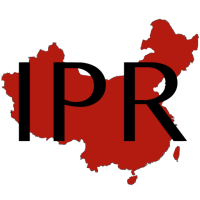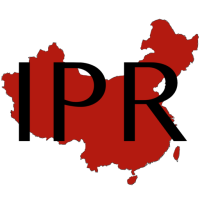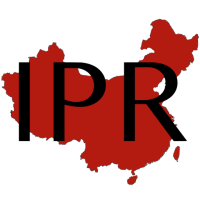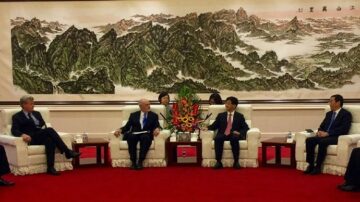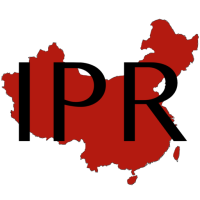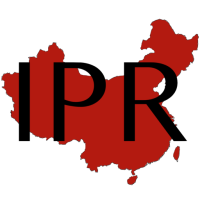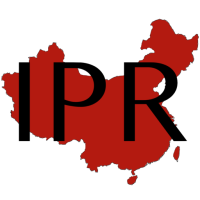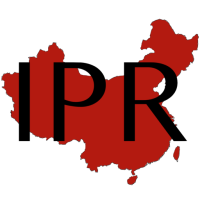
In conjunction with World IP Day (April 26) and China’s IP Week activities, the Supreme People’s Court (“SPC”) issued three important reports that reflect on the past and future of the role of the judiciary in IP adjudication. While the reports are wide-ranging, I focus here on the themes of increasing nationalism / concerns over extraterritorial reach of foreign courts, including a continuing desire of the SPC to strengthen international cooperation that is found in all three of these reports. USTR also raised concerns over nationalism in the courts in its most recent Special 301 Report.
The SPC once again announced its annual 10 “big IP cases” and 50 “model IP cases” as one of these three reports (2020年中国法院10大知识产权案件和50件典型知识产权案例) (the “Big Cases Report”). One purpose of the Big Cases Report is to “help regulate independent adjudication” and “develop a Chinese system of IP case guidance.” Susan Finder has described in an important blog the guidance that the SPC has issued on similar case searches. Consistent with the nationalistic theme of these three reports, two of the 10 “big cases” involve anti-suit injunctions (ASI’s) against foreign litigation. Case number two is Huawei v. Conversant (SPC, IP Division 2019) (the “Huawei Case”), and Case number six is OPPO v. Sharp (Shenzhen Intermediate Court, 2020) (the “OPPO Case”).
In a previous blog, I noted that the new SPC IP Court had previously recognized this case as a “typical IP case”, and listed it as the first among 55 such cases. According to the Big Cases Report, Huawei initially filed a lawsuit against Conversant in Nanjing. Thereafter Conversant filed a lawsuit in Germany. Conversant’s first instance decision was rendered before the Nanjing court’s first instance decision. The German court decided the FRAND licensing rate with respect to the German patents, which was 18.3 times the Nanjing court’s rate.
The SPC issued a “behavior preservation” ruling (ASI) on the same day as requested by Huawei. The SPC thereafter organized a hearing between the two parties. It rejected Conversant’s request for reconsideration. The SPC noted that this case is the first ASI intellectual property lawsuit in China. The case clarified the factors that should be considered for issuance of ASI’s against extraterritorial courts. The court notes that public interest and international comity factors were explored for the first time. In the SPC’s view, the ruling facilitated the parties reaching a global settlement agreement, ended parallel litigation in countries around the world, and achieved “good legal and social effects.” A translation of the Huawei Case is separately available here.
The OPPO Case also involved an ASI. As described by the SPC, Sharp filed a patent infringement lawsuit outside of China during the pendency of the SEP negotiations. Thereafter OPPO filed a lawsuit in Shenzhen requesting the court to determine a global licensing rate for the patents in suit. In view of the possibility that Sharp might coerce OPPO to negotiate with an “extraterritorial prohibition”, OPPO filed an application for behavior preservation. The court of first instance issued an ASI. Seven hours after the first instance court issued the Anti-ASI, the First District Court of Munich, Germany issued an ASI to OPPO, requesting OPPO to apply to the Chinese court to withdraw the ASI. The Chinese court of first instance “explained to Sharp the serious legal consequences of violating the judgment of the Chinese court.” In the end, Sharp unconditionally withdrew the reconsideration application in this case and the ASI applied at the German court, and at the same time stated that it would fully respect and strictly abide by the effective ruling of the Chinese court. The SPC further describes this case as “providing strong judicial guarantees for enterprises to fairly participate in international market competition.” The SPC further also considers these cases to be an indication of the transformation of the court from a “follower of property rights rules” into a “guide of international intellectual property rules” and that it is of “great significance.”
Another report released by the SPC in conjunction with IP Week was the annual report on the Situation Regarding Protection of IP in the Chinese Courts for the prior calendar year (2020) (中国啊知识产权司法保护状况 (2020))(the “Situation Report”). The Situation Report is more discursive and less empirical compared to prior years. According to the Situation Report, overall IP litigation of call types increased by 9.1% to 525,618 cases. This year’s Situation Report continues the trends of decreasing transparency in statistical data, particularly in areas of trade-related concerns such as data on how foreigners fare in Chinese IP courts. Data on foreign-related civil, administrative or criminal cases is no longer being reported at the national level. My assumption is that foreign-related civil cases are not being reported because their overall incidence has dropped to less than 1%. This lack of data compares unfavorably to some local courts, such as Guangdong, that continue to provide foreign-related data. According to the Guangdong Provincial People’s Court on the situation regarding IP protection (广东省知识产权保护状况 2020), foreign civil IP cases in that province increased by 50% in 2020 to 1,032 cases, which was faster than the overall provincial growth rate of 26.6%. As another example of a trade-related concern, although the Situation Report notes cases involving increased damages, there is no data on how much overall damages have increased.
The Situation Report notes that there were 5,544 criminal IP cases last year. Although criminal cases increased by 5.75% over the prior year, the total numbers are far less than a peak that occurred around 2012, when total criminal cases approached 13,000. Copyright and trademark cases showed the largest percentage increases, of 37.14% for copyright, and an increase from 6 to 49 cases for trade secrets. By comparison in 2017, there were 26 criminal trade secret cases. As in the United States, criminal trade secrets constitute a relatively small but growing share of criminal IP cases. In conversations with Chinese officials over the years, many told me that they believed that the overall increase in criminal IP cases from 2007-2012 was due to the focus on criminal IP enforcement brought by the WTO IP Enforcement case lodged by the United States in 2007. Although the United States arguably lost that claim, the decrease in criminal IP cases from 2012 despite the criminal law focus of the trade war might be viewed as evidence that the kind of granular jaw-to-jaw negotiations of 2007 were at least as convincing and effective than the unilateral demands imposed from 2018-2020. In addition, these earlier changes were obtained at a much smaller cost to the United States consumer and the global trading system than the important legislative changes occasioned by the pressure of the trade war.
The report also notes that Chinse court cases have had a positive impact on global competition. It singles out Huawei v. Conversant and its issuance of an ASI, as well as OPPO vs Sharp as addressing global parallel litigation, and thereby “protecting China’s judicial sovereignty and the parties’ legal rights.”
On a happier note, this report notes that SPC is participating in a WIPO project on patent case adjudication guidelines. Prof. Jeremy Fogel at Berkeley has been working on this project, and I am hopeful that it will having a positive impact globally.
The last of the three reports is the SPC’s Five-year Judicial Protection Plan 人民法院知识产权司法保护规划(2021-2025年) (the “Five Year Plan”). Yes, there is a five-year IPR plan for the judiciary. In fact, the 2021-2025 plan replaces an earlier 2016-2020 plan. The Five-Year Plan calls for “further maturation” of an IP judicial system “with Chinese characteristics, in line with rules of innovation, and meeting the needs of national development goals” ( 具有中国特色、符合创新规律、适应国家发展目标需要的知识产权司法保护制度进一步成熟).
Articles 16 and 17 of the Five Year Plan seek to strike a balance among international cooperation, extraterritorial overseas litigation and protecting of China’s “judicial sovereignty.” It states that China shall: “[d]eepen the international cooperation and competition mechanism of intellectual property rights”, including by. “equally protecting the legitimate rights and interests of Chinese and foreign rights holders in accordance with the law.” In addition, China shall “[p]romote the extraterritorial application of China’s laws and regulations on intellectual property rights, and effectively protect the overseas security and legal rights of Chinese citizens and enterprises, strengthen international judicial cooperation and coordination, properly resolve international parallel litigation, and safeguard national security in the field of intellectual property rights.” Article 17 further expands upon the role of the courts in protecting national interests by its general commitment to “build a strong sense of serving the country’s overall situation, and resolutely defend national sovereignty and core interests.” Predictably, the document does not address the potential conflicts among enforcing the law as written, national government policy interests, and defending national sovereignty, however these may be defined. It would not be inappropriate to assume that the legislative branch, not the courts, best resolves many of these policy issues.
The focus of the SPC in these three reports on the Huawei and OPPO ASI cases, as well as the express intentions of the courts and China’s leadership in China on becoming a norm-setter in IP appear to be another expression of the grander policy expressions of China’s demands to be treated as a leader on the global stage. The discussions around these two cases also reveal a strong focus on ASI’s to the exclusion of other issues that may arise in SEP cases, and may thus reflect a current priority of the courts and government. The court’s discussions of the Huawei and OPPO cases also provides a window into how cases that are deemed to be of national importance become “elevated” to guide other courts facing similar fact patterns, and may be procedural building blocks of a system of precedent “with Chinese characteristics.”
Photo: Commemorative stamp booklet of the Chinese courts.
- 000
- 2019
- 2020
- 9
- activities
- Agreement
- All
- among
- Application
- April
- around
- article
- Berkeley
- BEST
- Building
- Calendar
- call
- cases
- China
- chinese
- competition
- considers
- consumer
- continue
- continues
- conversations
- copyright
- countries
- Court
- court cases
- Courts
- Criminal
- Current
- data
- day
- Development
- dropped
- Effective
- expands
- facing
- First
- first time
- Focus
- Free
- future
- General
- Germany
- Global
- Government
- Government policy
- Growing
- Growth
- guide
- guidelines
- here
- How
- HTTPS
- Huawei
- Impact
- Including
- Increase
- Innovation
- intellectual property
- interest
- International
- involved
- IP
- issuance
- issues
- IT
- Law
- Laws
- Laws and regulations
- lawsuit
- Leadership
- Legal
- Level
- Licensing
- Line
- Litigation
- local
- Market
- Munich
- national security
- numbers
- Other
- patent
- Patents
- policy
- pressure
- project
- property
- protect
- protection
- Provincial
- public
- regulations
- report
- Reports
- rules
- ruling
- security
- sense
- serving
- settlement
- Share
- shenzhen
- SIX
- small
- Social
- Stage
- States
- Supreme
- system
- theme
- time
- trade
- trade secret
- trademark
- Trading
- Transformation
- Translation
- Transparency
- Trends
- United
- United States
- View
- war
- week
- WordPress
- world
- year
- years



